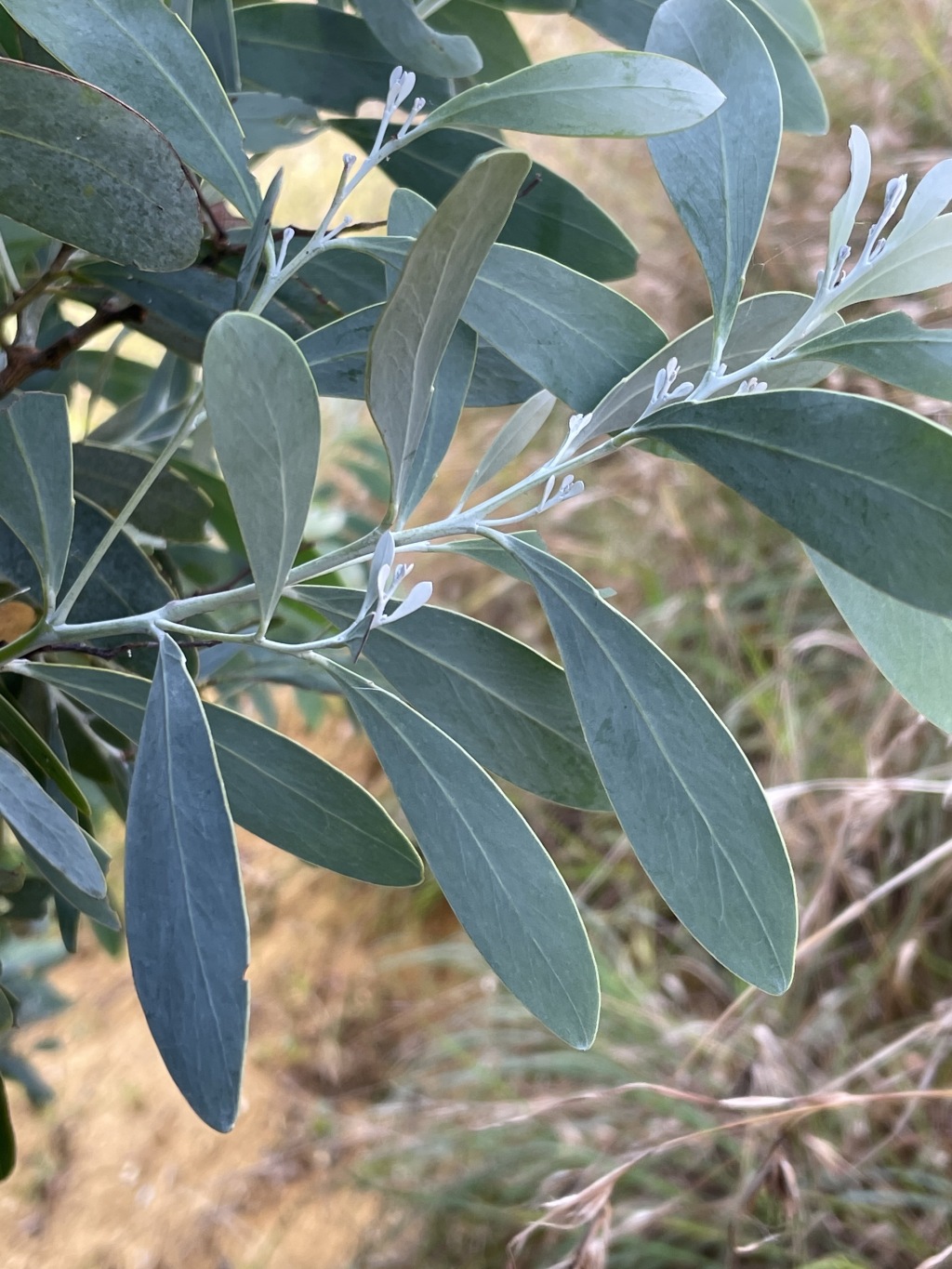Acacia caerulescens
Maslin & Court Buchan Blue WattleTree to 10–15 m high, often more or less pyramidal; branchlets glabrous, pruinose. Phyllodes obovate to oblanceolate or elliptic to narrowly elliptic, 4–8 cm long, 1.5–3 cm wide, narrowed and often shallowly recurved near base, obtuse, glaucous, pruinose when young, glabrous; finely and pinnately veined, midrib central or towards the adaxial margin; gland 5–25 mm above the pulvinus, connected to pulvinus by a fine, oblique vein. Racemes often in panicles, rachis 1–3 cm long, glabrous; peduncles 6–8 mm long, rather slender, glabrous; heads globular, mostly 20–30-flowered, lemon-yellow. Flowers 5-merous; sepals united. Pods 5–12 cm long, 14–22 mm wide, chartaceous, glabrous, pruinose, stalked; seeds longitudinal to longitudinally oblique, elliptic, 5–6 mm long, dull, black, funicle thick, red-brown and constricted at junction with aril. Flowers Nov.–Dec.
GipP, EGL, EGU. Restricted to Tambo Upper-Lake Tyers region north to near Murrindal. It occurs largely as remnant populations on clay over limestone in Eucalyptus woodland or forest and remaining populations are under threat by land clearing.
Closely related to A. obliquinervia which has less glaucous and often longer (5–17 cm) phyllodes with the gland 0–12 mm above the pulvinus and lacking an associated fine, oblique vein extending to the pulvinus, and has stouter peduncles 1.5–5 mm long. Acacia obliquinervia is far more widespread and occurs at higher altitudes than A. caerulescens.
Entwisle, T.J.; Maslin, B.R.; Cowan, R.S.; Court, A.B. (1996). Mimosaceae. In: Walsh, N.G.; Entwisle, T.J., Flora of Victoria Vol. 3, Dicotyledons Winteraceae to Myrtaceae, pp. 585–658. Inkata Press, Melbourne.
 Spinning
Spinning
